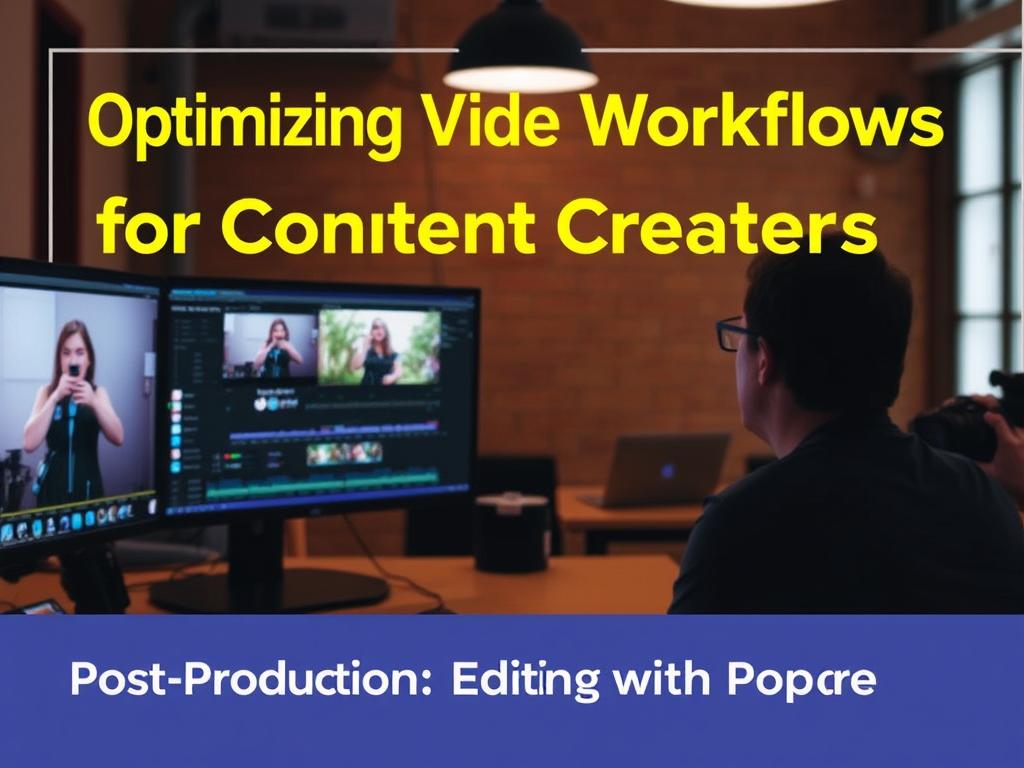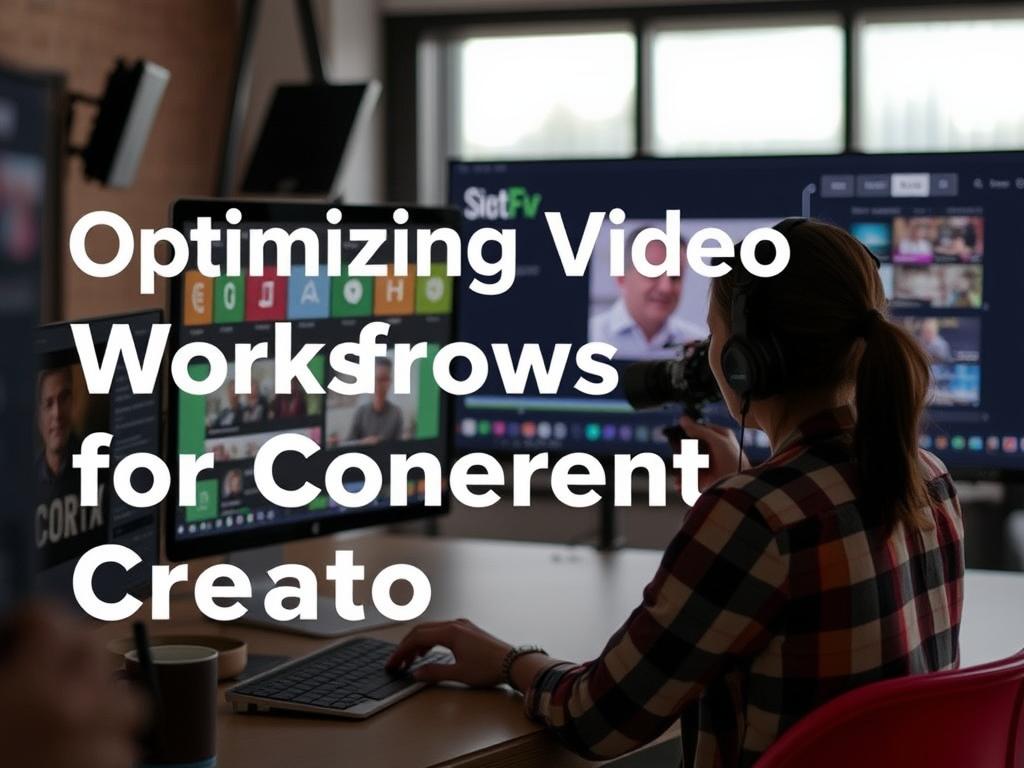Creating engaging video content is both an art and a science. For content creators, mastering the art of storytelling goes hand in hand with optimizing video workflows to make the process smooth, efficient, and ultimately more enjoyable. Whether you are a YouTuber, a social media influencer, or a professional videographer, understanding how to optimize your video workflow can drastically improve your productivity and the quality of your content. In this article, we will explore practical tips and techniques to streamline your video production from start to finish, ensuring your creative vision is executed with minimal frustration. Let’s dive into how to make your video workflows work better for you.
Understanding the Video Workflow
Before discussing optimization, it’s crucial to understand what a typical video workflow looks like. At its core, a video workflow consists of several stages: pre-production, production, post-production, and distribution. Each phase has its own set of tasks, tools, and challenges, and optimizing every step can lead to smoother overall operations.
Pre-Production: Planning for Success
Every great video starts with a solid plan. Pre-production involves script writing, storyboarding, scouting locations, and organizing equipment. By investing time and effort in this planning phase, you set a foundation that can save hours later.
In this phase, consider the following optimization tips:
- Use project management tools to track tasks, deadlines, and collaborators.
- Create a detailed shot list to avoid wasting time on unnecessary footage.
- Prepare your equipment and test it beforehand to minimize technical delays.
Production: Capturing Quality Footage Efficiently
During production, your focus shifts to capturing high-quality footage efficiently. Optimizing your setup and workflow in this stage can dramatically reduce the need for excessive reshoots or complex fixes in post-production.
Key ways to optimize production include:
- Organize your shooting schedule to minimize location changes and camera adjustments.
- Use pre-set camera settings to maintain consistency in lighting and color.
- Label and backup all footage immediately after shooting to prevent data loss.
Post-Production: Editing with Purpose

Post-production is often the most time-consuming stage, involving video editing, color correction, sound design, and adding effects. A well-optimized workflow here can save you countless hours.
Some essential strategies are:
- Use proxy files for smoother editing on less powerful machines.
- Create organized file structures and naming conventions for assets.
- Use keyboard shortcuts and automation tools in your editing software.
Tools and Software to Enhance Video Workflow
A crucial factor in optimizing video workflows is choosing the right tools. From editing software to cloud storage, the technology you use can either enhance or hinder your efficiency.
Editing Software
Popular video editing programs like Adobe Premiere Pro, Final Cut Pro, and DaVinci Resolve offer powerful features but differ in workflow optimization.
| Software | Strengths | Workflow Optimizations |
|---|---|---|
| Adobe Premiere Pro | Wide compatibility, excellent integration with Adobe CC | Supports proxies, customizable shortcuts, and team projects |
| Final Cut Pro | Optimized for Mac, fast rendering | Magnetic timeline, smart conform, and automatic analysis tools |
| DaVinci Resolve | Powerful color grading, robust free version | Unified workflow platform, Fusion visual effects, and Fairlight audio tools |
Storage and Backups
Managing large video files is a challenge for content creators. Optimizing storage solutions ensures your data is safe and accessible.
Consider these options:
- External hard drives with fast transfer speeds (e.g., SSDs).
- Cloud storage platforms such as Google Drive, Dropbox, or specialized services like Frame.io.
- Automated backup systems to prevent data loss.
Automating and Streamlining Repetitive Tasks
One of the best ways to optimize video workflows is to identify repetitive tasks that can be automated. Automation not only saves time but reduces errors and mental fatigue.
Using Templates and Presets
Instead of recreating titles, lower thirds, or color grades from scratch every time, use templates and presets available in editing software or create your own.
Batch Processing
Whether it’s converting multiple video formats, renaming files, or applying effects, batch processing can speed up tasks. Tools like Adobe Media Encoder or scripting options can handle large jobs effortlessly.
Integrating Collaboration Tools

Content creators often work in teams or with clients. Using collaborative platforms enhances communication and version control.
- Cloud-based project management like Trello or Asana for task tracking.
- File sharing services that support commenting and version history.
- Real-time collaboration features in some editing apps.
Optimizing Workflow with a Step-by-Step Approach
Now that we’ve covered the basics, here’s a streamlined approach to optimize your video workflow in practice:
- Plan meticulously: Spend time in pre-production organizing your shoot and resources.
- Maintain consistency: Use presets and templates during production and editing.
- Organize files: Adopt clear naming conventions and a logical folder structure.
- Automate routine tasks: Leverage batch processes and keyboard shortcuts.
- Secure your data: Backup footage regularly using local and cloud-based solutions.
- Collaborate effectively: Use project management and communication tools tailored for your team.
Common Challenges and How to Overcome Them

Even with a well-structured optimization plan, challenges arise for content creators when managing video workflows:
Overwhelming File Sizes
High-resolution footage leads to massive file sizes that can slow down editing. Working with proxy files or adjusting project settings to lower resolutions during editing can help maintain smooth performance.
Version Control Confusion
Multiple edits and file versions can become chaotic. Keeping a strict file naming policy and using collaboration platforms that track changes is essential.
Time Management
Balancing creative time with administrative tasks is tough. Automating repetitive actions and setting realistic deadlines helps keep projects on track.
Future Trends in Video Workflow Optimization
Technology continues to evolve rapidly, bringing innovative tools to improve workflow:
- Artificial Intelligence: Automated video tagging, scene detection, and smart editing suggestions.
- Cloud-based Editing: Enables access to projects from anywhere and facilitates remote collaboration.
- Real-time Rendering: Advances in GPU acceleration reduce waiting times during editing.
Staying updated on these trends allows content creators to maintain a competitive edge and further streamline their workflows.
Best Practices Summary
To summarize, here is a quick checklist to optimize your video workflow as a content creator:
| Practice | Benefit |
|---|---|
| Pre-production planning | Reduces last-minute problems and saves time |
| Organized file management | Enhances efficiency and prevents data loss |
| Use of templates and presets | Speeds up repetitive tasks and maintains consistency |
| Automated backups | Ensures security of important footage |
| Collaboration tools | Improves communication and version control |
| Regular software updates | Leverages latest features and security improvements |
Conclusion
Optimizing video workflows is fundamental for content creators striving to maximize both productivity and creative output. By understanding each stage of the video production process and integrating smart tools, automation, and organizational habits, creators can turn potentially overwhelming projects into manageable, enjoyable experiences. Whether you’re filming your next vlog or producing a high-end commercial, the key lies in balancing technical efficiency with creative freedom. The right workflow doesn’t just save time—it empowers you to tell better stories, connect more deeply with your audience, and grow your channel or brand more effectively. Embrace these strategies today, and watch your content creation become smoother, faster, and more rewarding.